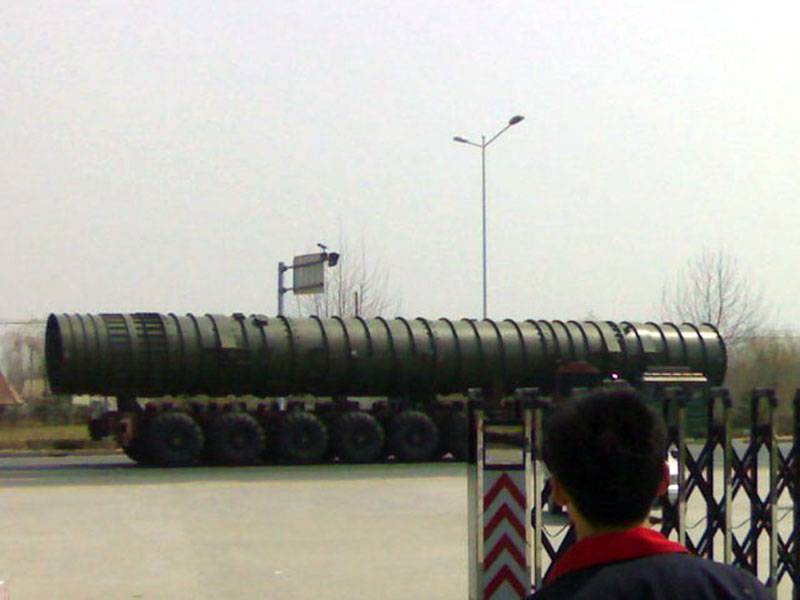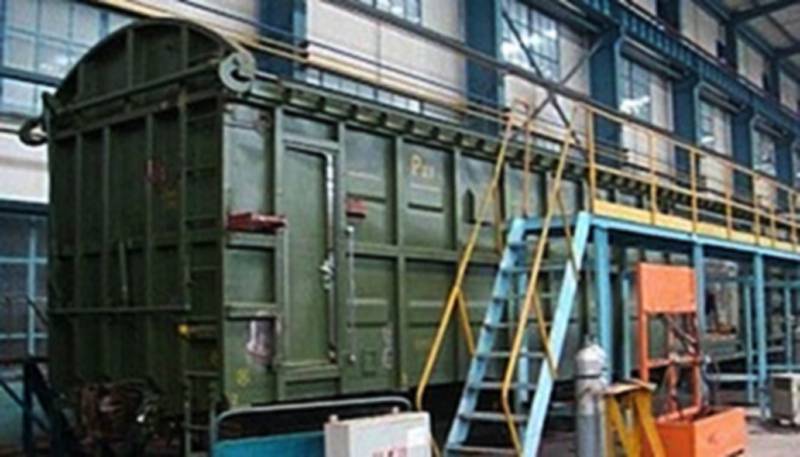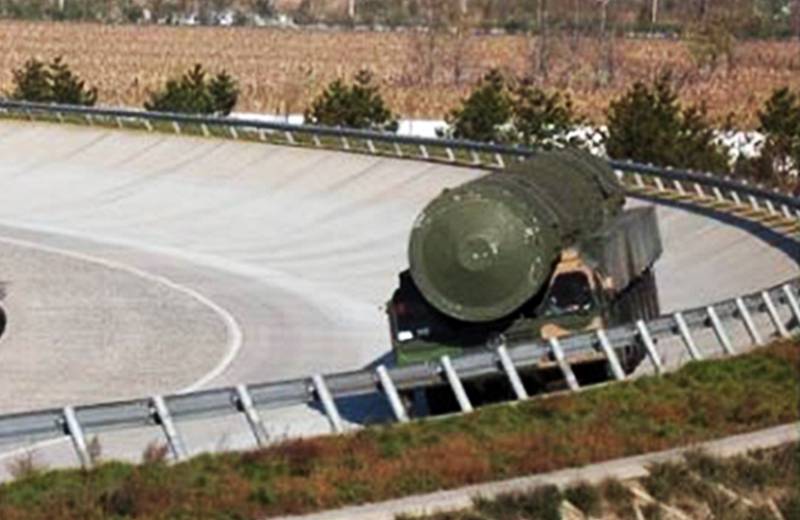Intercontinental Ballistic Missile Project DF-41 (China)
Despite the secrecy regime that is traditional for Chinese strategic projects, foreign intelligence still finds ways to learn certain features of new developments. In addition, the disclosure of information contribute to the activity of the press and some enthusiasts. Their joint work makes it possible to create an approximate picture describing certain projects, but this does not exclude errors. Let's try to collect all the available data on the DF-41 rocket, appearing in various sources.
As the name implies, the promising ballistic missile DF-41 is another representative of the Dongfeng (East Wind) family, which has been providing China’s strategic security for several decades. At the same time, the new rocket differs significantly from its predecessors by different design features, characteristics, etc. In particular, in the framework of the new project, as far as is known, an attempt has been made to expand the methods of deploying missiles.

Presumably the DF-41 rocket in a shipping container. Photo by Militaryparitet.com
According to some reports, the DF-41 project dates back to the mid-eighties. Back in 1984, according to the results of the analysis of technologies and strategies, it was decided to develop a new intercontinental ballistic missile. According to the technical specifications of the time, the new product should have been able to attack targets throughout the United States. In addition, it was decided to abandon liquid fuel and equip the new rocket with a solid-fuel engine. The result of the new project was to be the replacement of obsolete DF-5 missiles with new weapons with enhanced characteristics.
One of the main problems of the new project was solid fuel with the required characteristics. According to reports, the development of the necessary composition was completed only in the early nineties, after which the engine was tested on the basis of a new fuel. Successful completion of this stage of work allowed the launch of a full-scale development of a new ICBM and other elements of the missile system.
Apparently, it was at this stage that a proposal appeared to use a promising missile with several types of launchers. To date, it is known about the development of the mine installation, as well as about the work on two versions of alternative mobile systems. One of them should be based on a special wheeled chassis, and the second is proposed to be built on the basis of railway rolling stock. The appearance of two variants of the mobile missile system can significantly increase the shock potential of the DF-41.
Official Beijing does not disclose basic information about a promising ICBM. In addition, information on the characteristics of the complex remains classified. Nevertheless, the efforts of intelligence agencies, the media and enthusiasts from the interested public in the public domain appear some information about the project. Some of the information published so far looks plausible and can be true. However, we should not forget that the available data may be erroneous for one reason or another.
The most likely and plausible version of the DF-41 rocket looks like this. It can be a three-stage solid-propellant ballistic missile with a split head, carrying warheads for individual guidance. The maximum firing range is estimated at 10-12 thousand. Km. At the same time, there are more courageous assumptions that a rocket can attack enemy targets at a distance of up to 15 thousand km. Thus, from the point of view of the basic characteristics, the new Chinese rocket can be an analogue of the leading foreign developments of its class.
High flight range should be achieved through the consistent work of solid-fuel engines of three stages. Their task is to lead the rocket to the desired trajectory and accelerate to the desired speed, after which the warheads can be reset with their individual guidance to different targets.
According to various estimates, the DF-41 rocket assembly should have a length of the order of 20-22 m with a case diameter of about 2-2,5 m. The starting weight is estimated at 80 t. The throw weight can reach 2,5-3 t.
The new ICBM should have an inertial guidance system that is standard for weapons of this class. In this case, it is possible to use the course correction for signals from the Beidou navigation satellites. Currently, this navigation system is capable of serving only the territory of China and part of nearby regions, but in the future it is planned to deploy a full-fledged grouping suitable for use throughout the planet, which will improve the efficiency of the DF-41 rocket complex. Accuracy is unknown. According to various estimates, the combat missile defense unit should not exceed 150-200 m. At the same time, it was stated that after the launch of the full-fledged Beidou grouping, the accuracy of the missiles should increase.
There are several versions of the possible composition of the warhead of the new rocket. According to various sources, the DF-41 can carry both a monoblock warhead with a charge of power 1 Mt and warheads of other types. In this case, it is possible to use from six to ten combat units of individual guidance with a capacity of up to 150 kt. Earlier it was reported that in the future for the DF-41 rocket can be created new warheads, which differ from the existing ones by reduced dimensions and enhanced characteristics.
In the foreign press over the past few years, the topic of launchers for the new Chinese ICBMs has been repeatedly raised. As follows from some reports, the DF-41 rocket should start not only from the silo launcher, but also from other systems of a similar purpose. According to some information, the development of a mobile launcher on a special multi-axle wheeled chassis began in the late nineties. Later, as reported, such a combat vehicle was developed and tested.
At present, according to the Western press, Chinese experts are busy checking and testing the design of a promising launcher based on a railroad car. Already carried out throwing launches of full-scale mock-ups of the rocket, with the help of which the operation of the launcher systems is checked and the influence of the processes taking place on the design of the special car. To date, several such inspections have been conducted, the results of which can lead to full-scale DF-41 test launches.
Designing a new Chinese ICBM took a lot of time, which is why tests began only in the current decade. The first flight tests of a full-fledged product took place in July 2012. There is also unconfirmed information about the second test launch, also conducted in 2012 year. According to others, the second time the DF-41 product started from the test site only at the end of the 2013 year. Until the spring of 2016, inclusive, there were reports of seven tests of the new Chinese rocket. On average, the Chinese industry performs two launches per year, according to the results of which, apparently, the existing project is completed to correct the existing shortcomings.
As follows from media reports, to date, China has completed work on the power plants of the three stages of the new rocket, and also brought to the desired state of the guidance system. Since the end of 2014, rockets with a split head are being tested, in which training warheads are attacking various targets.

Rail car with a launcher for a rocket. Photo Freebeacon.com
Approximately from 2014, the Chinese industry is conducting tests of prototypes of the railway launcher. Performed several throwing tests. In open sources, several photographs have already appeared, which presumably depict various elements of a promising railroad missile complex, including a special wagon with a launcher. The reliability of such images, however, may be questionable.
According to various estimates, the DF-41 missile system may be adopted by the Chinese army over the next few years. Probably the first mine-launched missiles will be deployed. Then on duty will be able to enter the ICBM on mobile launchers. The available information suggests that the installation on a wheeled chassis is much closer to adoption, while the railway system still needs numerous modifications.
According to available data, at present, the basis of China’s strategic nuclear forces are intercontinental ballistic missiles DF-5 of later modifications, capable of hitting targets at distances up to 10-13 thousand km. Due to regular upgrades with the introduction of new equipment for various purposes, the characteristics of the later versions of the DF-5 were significantly improved in comparison with the basic products. Also in service are several other Dongfeng missiles with different characteristics.
The appearance of the next ICBM of a family with high characteristics, corresponding to the available estimates, will be a real breakthrough in the modernization of the Chinese armed forces. This will allow the Chinese military to complement, and in the future, replace outdated DF-5 missiles, which, despite a number of upgrades, may not fully meet the requirements of the times.
Work on the new project should be completed in the next few years. Not later than 2018-20, or several years earlier, the DF-41 rocket can be put into service and put into series with the subsequent deployment on the bases of the armed forces. The adoption of a new ICBM could have a specific effect on the strategic situation in the region and in the world. What will this influence be and how new Chinese weapon other countries will react - time will tell.
On the materials of the sites:
http://globalsecurity.org/
http://freebeacon.com/
http://ausairpower.net/
http://nevskii-bastion.ru/
http://militaryparitet.com/
http://bmpd.livejournal.com/

Information